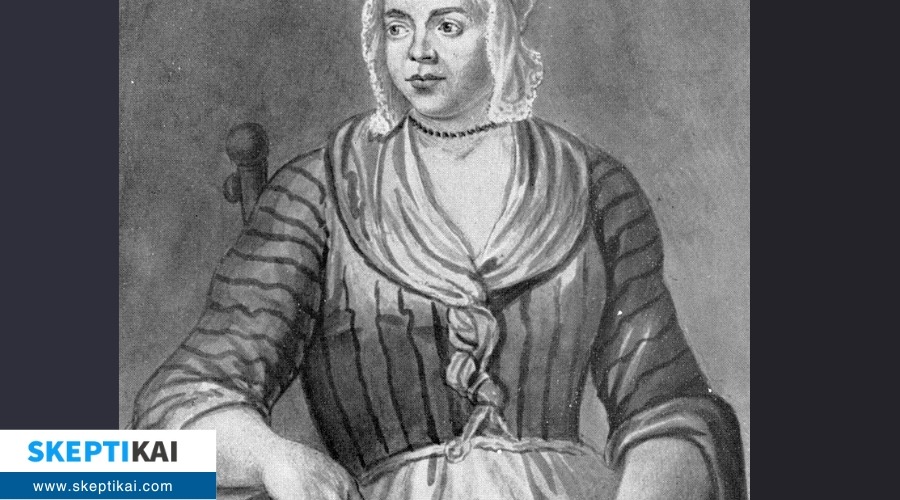Why Do We Have to Be Skeptical About Written Stories From Ancient People?
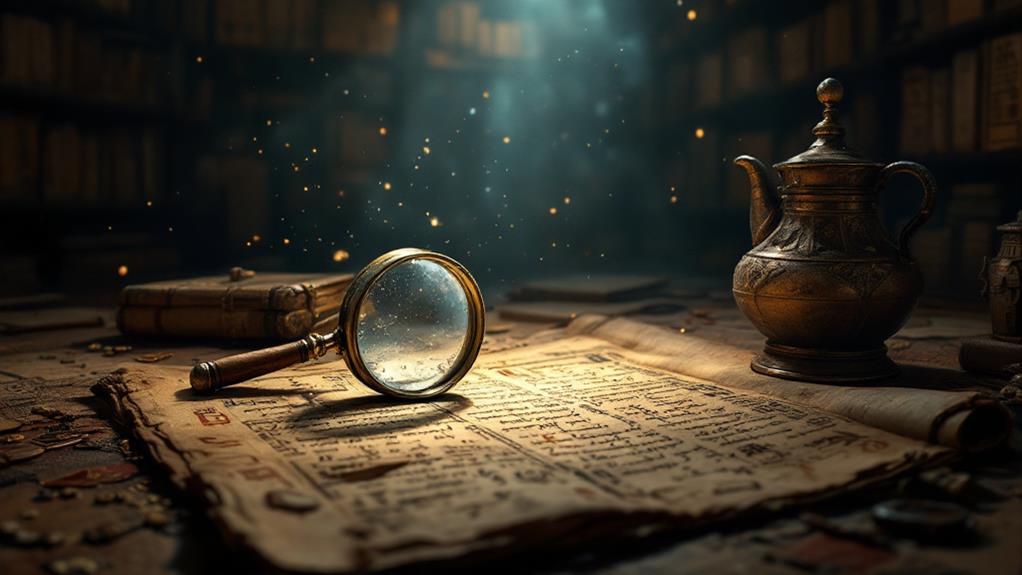
You should approach ancient written stories with skepticism because they often mix myths, cultural biases, and political agendas that blur reality. Oral traditions distorted stories over generations, while translations introduced additional inaccuracies. Bias from storytellers and intended audiences often colored narratives to reinforce societal norms or political power. Archaeological evidence sometimes contradicts ancient accounts, revealing gaps in authenticity. In addition, religious influences added fantastical elements that served moral or educational purposes. Ancient recording methods were limited, leading to potential misrepresentations over time. By understanding these complexities, you'll gain a deeper insight into the intriguing world of ancient storytelling.
Historical Context and Bias
Examining ancient tales requires understanding the historical context and bias that shaped them. When you read these tales, it's essential to reflect on the time and place in which the authors lived. Recognize that authorial intent often mirrored the prevailing values and beliefs of their society. This intent influenced not only what was included in the tales but also what was omitted or altered to suit contemporary audiences or political agendas. For example, ethical skepticism challenges the basis of moral judgments, which might have influenced how ancient narratives were framed to align with or question prevailing ethical norms. You should pay attention to the narrative structure of these tales, as it can reveal much about the cultural priorities and worldviews of the time. How a tale is organized—its beginning, middle, and end—can highlight what the authors deemed significant or worthy of emphasis. Be mindful of who was telling the tale and for whom it was intended, as these factors can introduce bias. The narratives may have been designed to reinforce certain power structures or moral lessons, rather than to provide an unbiased account of events.
Oral Tradition Challenges
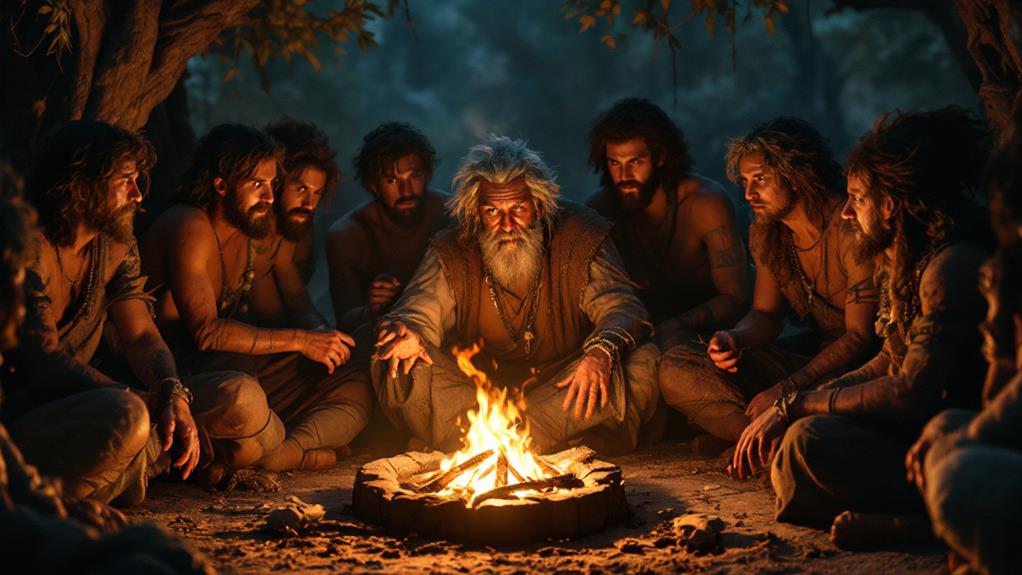
How do oral traditions complicate our understanding of ancient stories? When you explore the world of ancient narratives, you must consider the role of oral storytelling. Before stories were written down, they were passed verbally from one generation to the next. This method, while rich in culture and tradition, is prone to memory distortion. It's like playing a game of "telephone" over centuries; the details can change drastically over time. Just as urban legends reflect societal anxieties and fears, ancient stories often reveal the cultural values of the societies that told them. As stories are retold, each storyteller might add their own embellishments or omit parts they deem less significant. This can lead to considerable variations in the details and themes of a story. You may find that two versions of the same tale differ remarkably, making it challenging to ascertain the original version.
Additionally, oral storytelling relies heavily on the memory of the storyteller, which isn't always reliable. Human memory is fallible and can be influenced by personal biases or societal changes. As a result, you might encounter ancient stories that reflect more about the time they were last told than the time they purportedly describe. This inherent fluidity of oral traditions means you have to be cautious when using them to understand our past accurately.
Translation and Interpretation Issues
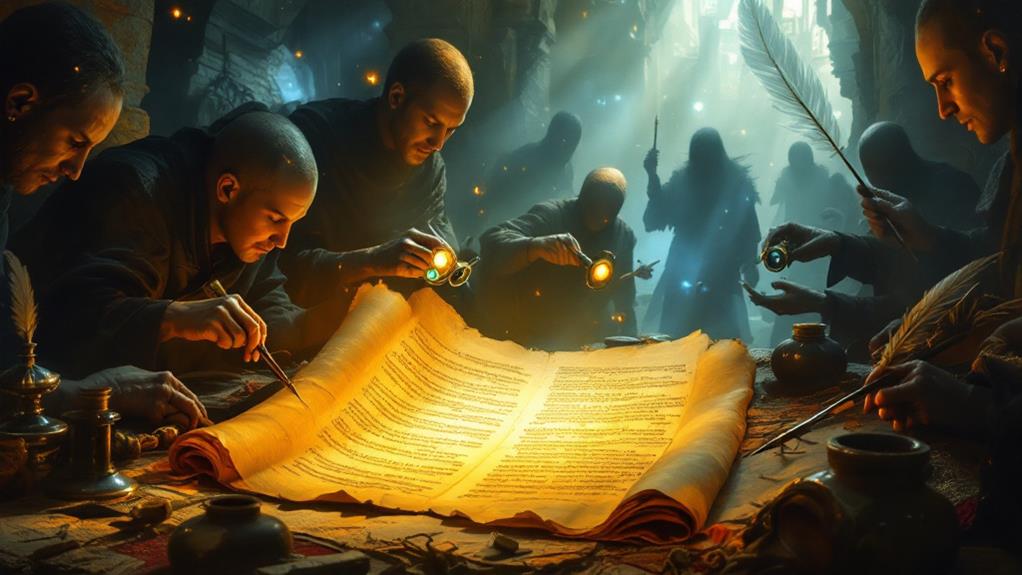
Steering ancient stories through the lens of translation and interpretation can be a complex endeavor. When you read these stories, you rely on translators to convey the original meaning as accurately as possible. However, translation accuracy is often a significant challenge. Ancient languages may have words or phrases that don't have direct equivalents in modern languages, leading to potential misrepresentations. This can alter the essence of the original text, making it difficult for you to grasp the true intent of the story.
Moreover, interpretation variability adds another layer of complexity. Different translators might interpret the same text in diverse ways based on their cultural background, personal biases, or differing scholarly approaches. These interpretations can lead to multiple versions of the same story, each with its nuances and perspectives. As a reader, this variability makes it challenging to determine which version is closest to what the original author intended.
Thus, while engaging with ancient narratives, it is crucial to remain aware of these translation and interpretation issues. By understanding these challenges, you can approach ancient stories with a more informed and critical mindset, recognizing that what you read might not fully capture the original narrative.
Lack of Corroborative Evidence

The fabric of ancient stories often lacks the support of corroborative evidence, leaving you to wonder about their authenticity. When you explore the tales passed down through generations, you might notice they don't always align with archaeological findings. Artifacts and ruins can reveal much about a civilization, but they often don't confirm the specifics of written accounts. Without physical evidence to back up these narratives, you're left questioning their truth.
Engaging in comparative analysis further highlights this issue. When you compare stories from different regions or cultures, inconsistencies can emerge. Ancient texts might describe grand battles or monumental events, yet when you contrast these accounts with neighboring civilizations' records, discrepancies often appear. This lack of alignment suggests that not all ancient stories are rooted in fact.
Even when archaeological findings do coincide with written accounts, the evidence might not support all the details. For instance, an ancient city might be unearthed, but the grandeur described in texts doesn't match the ruins found. This gap between story and evidence fuels skepticism, urging you to critically assess the authenticity of these ancient tales before accepting them as historical truths.
Cultural and Religious Influences

While the absence of corroborative evidence raises questions about the authenticity of ancient stories, cultural and religious influences also play a significant role in shaping these narratives. You have to reflect on how cultural perception and religious beliefs deeply impact the way stories are told and preserved. Ancient societies often used storytelling as a means to convey their values, beliefs, and understanding of the world. These stories weren't just entertainment; they were educational tools and moral guides, deeply embedded in the cultural fabric.
When you read these stories, recognize that they reflect the prevailing religious beliefs of their time. Myths and legends often incorporate gods, supernatural events, and moral lessons that align with the spiritual understanding of the society that birthed them. Such narratives can sometimes be exaggerated or altered to reinforce religious doctrines or cultural norms.
In essence, these stories are not just historical accounts but are interwoven with the cultural and religious contexts of their time. By acknowledging this, you gain a clearer perspective on why skepticism is essential. Understanding the cultural and religious influences helps you separate historical facts from ideological embellishments, providing a more nuanced view of ancient narratives.
Political Agendas in Ancient Writings

Power dynamics often shape the narratives found in ancient writings, revealing the political agendas of their time. When you study these texts, you'll notice how rulers and elites used written stories to solidify their authority. Ancient authors often employed propaganda techniques to cast their leaders in a positive light, painting them as divinely chosen or heroically superior. These narratives weren't just simple recounts of events; they were crafted to influence public perception and justify the actions of those in power.
Understanding the power struggles of the period is essential. These struggles often dictated what stories were told and how they were presented. Leaders manipulated narratives to suppress dissent and unify their subjects under a common ideology. You might find that certain stories overemphasize victories or conveniently omit failures, all to maintain an image of strength and control.
As you explore these writings, stay critical. Recognize that many ancient texts served as tools for political maneuvering. By acknowledging the underlying political motives, you gain a clearer, more nuanced understanding of history, enabling you to separate the constructed image from the reality of past societies.
Mythology vs. Historical Fact
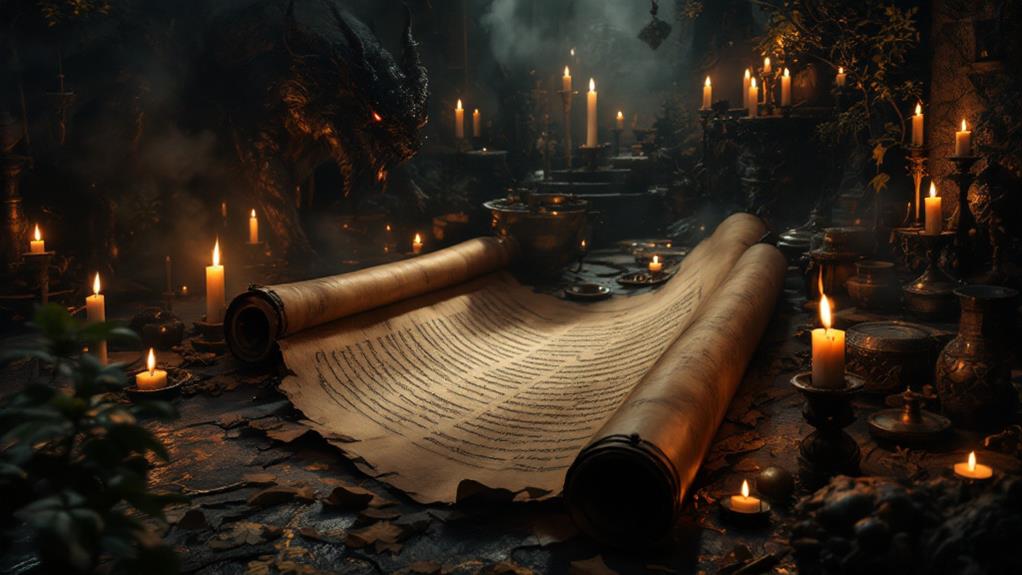
Ancient stories often blur the lines between mythology and historical fact, leaving you to discern where legend ends and reality begins. When you examine these tales, you're traversing a landscape filled with mythical narratives that sometimes intertwine with genuine historical events. The challenge lies in distinguishing the fantastical elements from those rooted in historical accuracy. Ancient societies didn't always prioritize factual reporting; instead, they wove together tales that served cultural, religious, or pedagogical purposes.
You might find yourself captivated by legendary heroes, epic battles, or divine interventions, but keep in mind that these stories often aim to convey moral lessons or cultural ideals, rather than factual recounting. The task is to identify which elements might reflect actual events or people, and which are purely products of imagination or symbolism.
In your quest for truth, consider the context in which these stories were written. Ask yourself: What was the purpose of the narrative? Who was the intended audience? By questioning these aspects, you can better understand the balance between myth and fact, ultimately gaining insights into ancient civilizations and their worldviews while remaining aware of their limitations in conveying historical accuracy.
Limitations of Ancient Record-Keeping
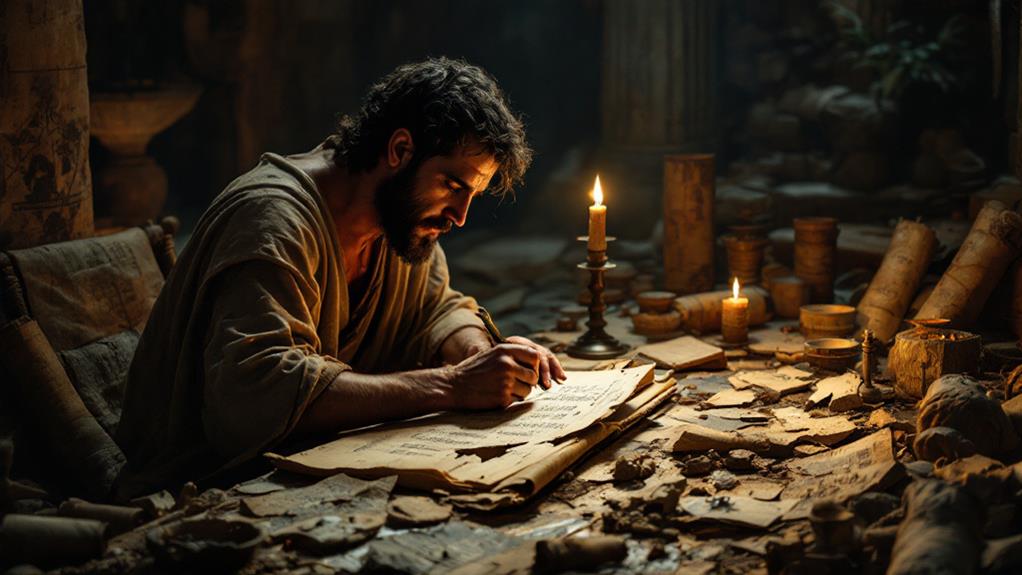
Exploring the blurred lines between mythology and historical fact leads you to another challenge: the limitations of ancient record-keeping. Imagine relying on recording techniques that were primitive by today's standards. Ancient scribes used materials like papyrus, clay tablets, or animal hides, which were labor-intensive and limited in availability. These early methods meant that only the most significant events or revered narratives were documented, often leaving out everyday details that could provide a fuller picture of the past.
Preservation methods also posed significant challenges. Unlike modern archival techniques, ancient records were susceptible to environmental damage, such as humidity, fires, or floods. Many documents simply didn't survive the test of time. Even if they did, translations and copies over centuries could introduce errors or intentional alterations, making it hard to discern the original message.
You must also consider the cultural context of the period. Written accounts often reflected the biases or agendas of those in power, shaping narratives to fit their needs. This means that what was recorded might not be an accurate reflection of reality, but rather a constructed version that served certain interests. Therefore, skepticism becomes vital when interpreting ancient stories.
Modern Methods for Verification

How do we sift truth from myth in ancient stories today? You rely on modern methods that combine archaeological findings with scientific analysis. By examining physical evidence, like artifacts and ruins, you can establish a concrete timeline and context for ancient narratives. These findings help you verify or refute details within these stories, offering a tangible connection to the past.
Scientific analysis plays a vital role in this process. Techniques like radiocarbon dating allow you to determine the timeframe of organic materials, lending credibility to historical accounts when dates align. Likewise, DNA analysis can reveal genetic links between ancient populations, confirming migration stories or the spread of certain cultures.
Moreover, you can use geochemical analysis to trace the origins of materials, like metals or pigments, found in ancient artifacts. This helps you understand trade routes and cultural exchanges described in ancient texts. By cross-referencing archaeological findings with written records, you gain a clearer picture of what truly happened.
Ultimately, these modern methods empower you to distinguish fact from fiction in ancient stories, providing a more accurate understanding of history while respecting the cultural significance of these narratives.



